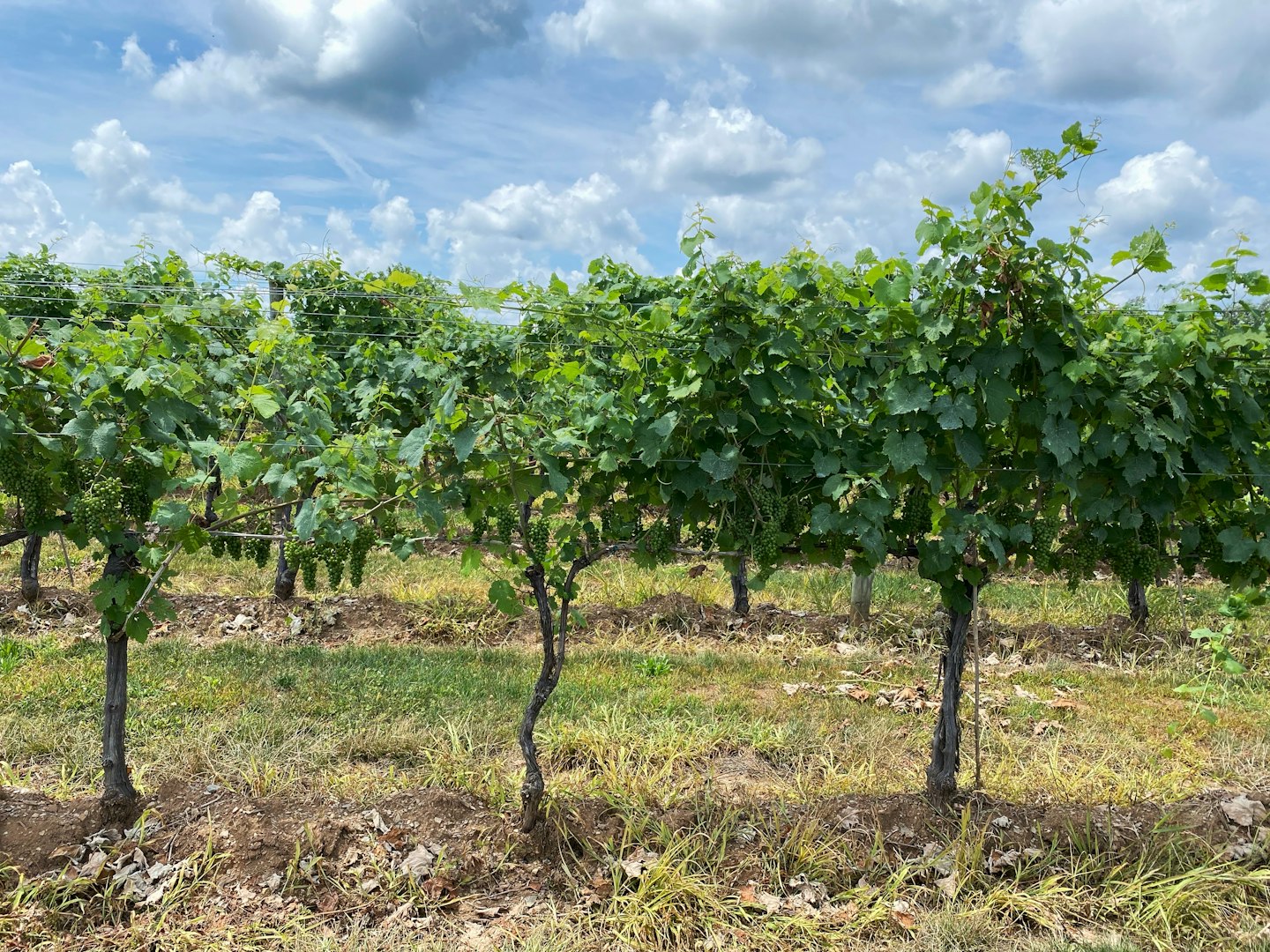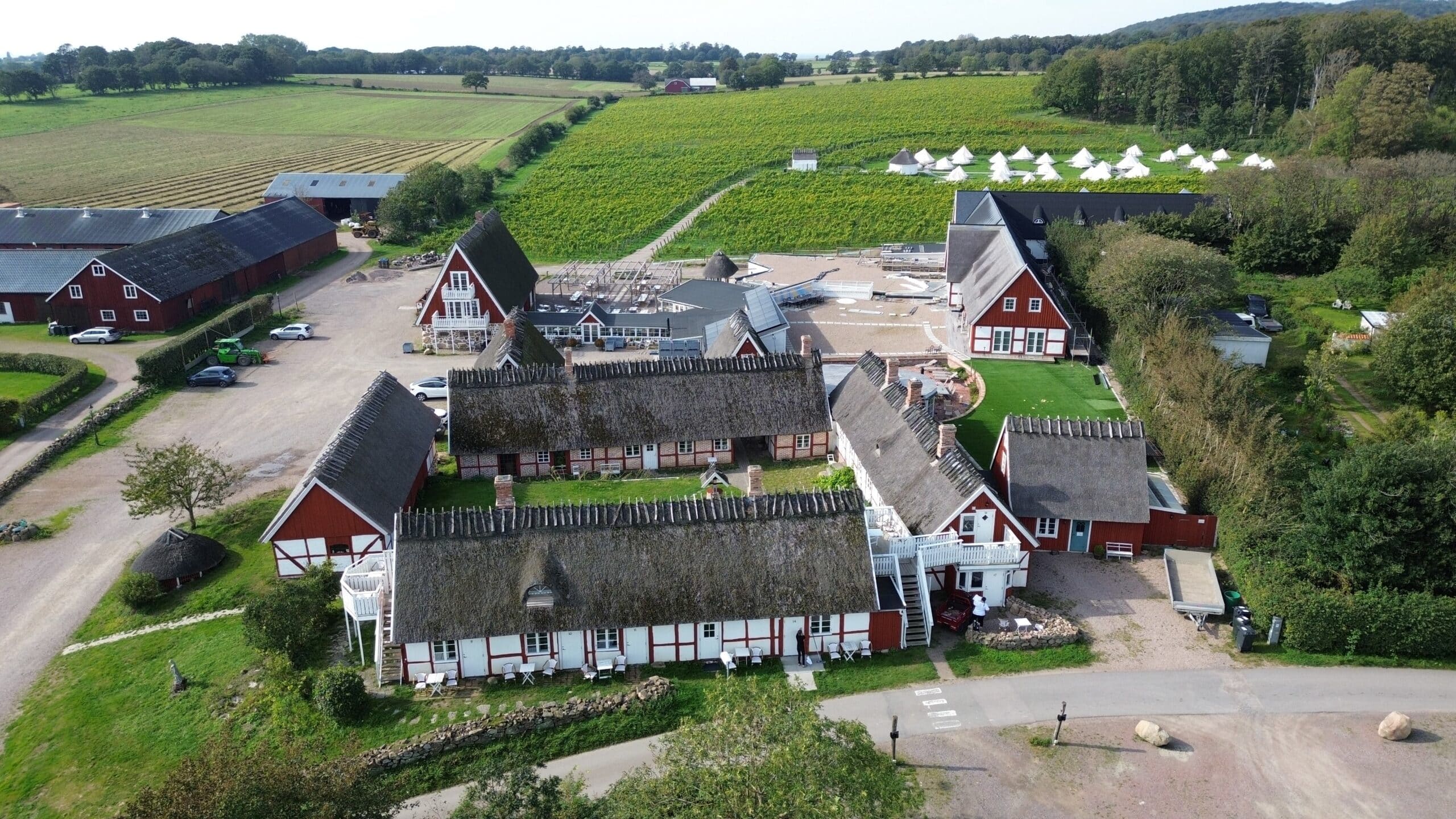Swedish Wineries and Why Sweden Produces Such Great Sparkling Wines

Discover Swedish Wine Producers and the Secret Behind Our Sparkling Wine Success
Have you ever wondered how it is possible to grow wine in our northern climate? Despite the challenges that the Swedish weather presents, winemakers here have achieved an impressive transformation – they combine modern technology, passion, and a hefty dose of Swedish creativity to create unique wines. Join us on a journey through Sweden's flourishing vineyards, where we reveal how innovation and tradition go hand in hand and why our sparkling wines are now conquering both national and international markets.
Can Sweden Really Grow Wine?
Yes, we can – and we do it with flair! Although our northern climate may not seem like an ideal environment for viticulture at first glance, technological advances and smart, tailored cultivation methods have revolutionized Swedish wine production. Winemakers have carefully selected grape varieties that can withstand our unique weather conditions – such as Solaris, Rondo, and even Pinot Noir – to produce high-quality grapes.
In regions like Skåne, Gotland, and Öland, the evidence has been clear:
Skåne: Here, the mild coastal climate, combined with long, sunny summer days, creates ideal conditions for growing grapes with vibrant acidity and rich fruitiness. The vineyards in Skåne often produce wines with an elegant balance of freshness and body.
Gotland: The calcium-rich soil of Gotland contributes a unique minerality to the wines, giving them a distinctive character. Despite the slightly cooler temperatures, experience has shown that the right grape varieties thrive and yield interesting, aromatic wines.
Öland: With its unique microclimate, where warm days and cool nights create large temperature variations, winemakers have managed to produce wines with complex flavor nuances and a pronounced fresh acidity.
Thanks to these innovations and the passion that drives Swedish winemakers, we can now enjoy wines that truly reflect our Nordic terroir – unique expressions of both tradition and innovation, which are now gaining recognition both nationally and internationally.
Fun fact: Sweden’s cool climate gives the wines a fresh acidity – perfect for sparkling wine!
What grape varieties are used in Swedish wine production?
In Sweden, winemakers choose grape varieties that are especially adapted to our cold climate. These robust grapes endure the challenging conditions and help create wines with a distinct Nordic character. Some of the most commonly used varieties are:
Solaris: A true star in Swedish viticulture. This grape is widely used to produce both white and sparkling wines, thanks to its ability to maintain lively acidity even in cool conditions.
Rondo: A hardy grape well-suited for cultivation in our climate. It is primarily used for red wines and imparts a robust character with intense fruity notes.
Pinot Noir: Although Pinot Noir is known for being sensitive, Swedish winemakers have successfully adapted its cultivation to also produce successful sparkling wines with elegant and subtle aromas.
Ortega: An aromatic grape ideal for creating off-dry white wines. Ortega contributes clear, floral, and fruity notes that fit perfectly in our Nordic conditions.
These grape varieties, combined with the expertise and creativity of Swedish winemakers, contribute to making our wines both unique and sought after in the market.
The best regions for viticulture in Sweden

Sweden has several regions that stand out when it comes to viticulture. Here are some of the top ones:
1. Skåne
Skåne's mild climate and proximity to the sea make it Sweden's wine hub. Here you will find fantastic vineyards such as:
Arilds Vingård: Organic wines and cozy vineyard visits.
Kullabergs Vingård: A pioneer in sparkling wines.
Skepparps Vingård: Known for sustainable production and beautiful surroundings.
Hällåkra Vingård: Combines innovation with sustainability.
2. Gotland
Gotland's limestone-rich soil produces wines with delightful mineral tones. Don’t miss:
Gute Vingård: Offers a unique combination of history and wine.
3. Öland
With its unique microclimate, Öland is home to vineyards such as:
Wannborga Vingård: Known for its experimental wines.
Why are Swedish sparkling wines so good?
Swedish sparkling wines have received international attention in recent years – but what makes them so unique and special? Here are some key factors:
Acidity: The cold Swedish climate helps the grapes develop a naturally high acidity, which is crucial for creating lively, fresh sparkling wines. The high acidity gives the wines a refreshing brightness and a perfect balance, even when paired with food.
Craftsmanship and innovation: Swedish winemakers dare to experiment and combine traditional methods, such as Méthode Champenoise, with modern techniques. The result is sparkling wines that not only adhere to old traditions but also challenge and renew wine production with their creativity.
Local terroir: The mineral-rich soils and Nordic growing conditions give Swedish grapes a unique character. The local terroir contributes subtle but distinct flavor nuances that set our sparkling wines apart from their international competitors.
A shining example is Köpingsbergs Vingård, which specializes in sparkling wine and has received both national and international acclaim – a testament that with the right grape varieties, innovative methods, and passion, even the coldest regions can produce world-class wines.
Are Swedish wines organic?

Sustainability and environmental awareness are central values for many Swedish wineries. More and more producers are investing in organic farming and using sustainable production methods to minimize environmental impact. Wineries such as Flyinge Vingård and Vingården i Klagshamn have made organic farming a given, which not only promotes a cleaner environment but also contributes to the grapes developing a unique character.
To ensure that a wine is organic, you should look for certifications on the bottle, such as KRAV or other relevant organic labels. These certifications guarantee that the winery operates according to strict environmental standards and ethical principles. By choosing organically certified Swedish wines, you support both local producers and sustainable development within the wine industry.
Plan Your Winery Visit
Are you considering visiting a Swedish winery and want to get the most out of the experience? Here are some concrete tips and advice to make your visit both memorable and inspiring:
• Book in advance:
Many wineries offer guided tours, wine tastings, and sometimes even culinary experiences. Since spots can fill up quickly, it's a good idea to reserve your place well in advance. Be sure to check the wineries' websites or call directly to find out about current offers and dates.
• Try local flavors:
Each winery has its own specialties - often, unique wines are produced that are only available on-site. Take the opportunity to taste the winery's signature wines and learn more about their growing methods. Feel free to ask the guide about the history behind the wines and the grape varieties used. This will provide a deeper understanding and an extra dimension to your experience.
• Choose the right season:
To truly enjoy the atmosphere and the surroundings of the wineries, summer and autumn are the best times to visit. During summer, you can often enjoy beautiful, sunlit vineyards and outdoor tastings, while autumn offers a unique palette of colors and the chance to experience the harvest season – a time when passion and creativity are truly visible.
• Explore Recommended Wineries:
Discover which wineries are worth a visit. For example:
Flyinge Winery: Known for its modern and organic wine production.
Åhus Winery: Offers guided tours in a cozy environment where you can taste their award-winning wines.
Kullabergs Winery: A pioneer in Swedish sparkling wines with an exciting history and sustainable production.
Summary
Swedish wineries are much more than just a local success story – they are a dynamic part of a growing trend that is now putting Sweden on the wine world map. Our wineries, from those producing elegant sparkling masterpieces to those focusing on sustainable, organic viticulture, demonstrate that Nordic terroir can yield wines with both character and international appeal. Each visit to a Swedish winery is a unique experience where tradition meets innovation, and where the passion for winemaking shines through in every bottle.
So, what are you waiting for? Take the opportunity to plan your next outing to a Swedish winery, discover the exciting local flavors, and see for yourself why our Nordic country is now bubbling with wine enthusiasts!
Visit Kullabergs Winery or Arilds Winery today and discover the magic of Swedish wines!
Planning to host your own wine tasting at home? Read my guide here.
Map of the Top 19 Vineyards in Sweden
Below is a map of the top 19 vineyards in Sweden. Click on a marker to see an info window with detailed information about each vineyard.
